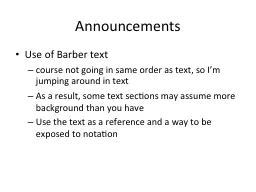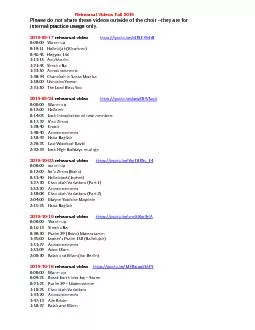PPT-Announcements Assignments:
Author : faustina-dinatale | Published Date : 2020-04-08
HW6 Due Tue 33 10 pm P3 Due 35 Final Exam Monday May 4 14pm Let us know ASAP if you have 3 exams scheduled within 24 hours Make travel arrangements accordingly
Presentation Embed Code
Download Presentation
Download Presentation The PPT/PDF document " Announcements Assignments:" is the property of its rightful owner. Permission is granted to download and print the materials on this website for personal, non-commercial use only, and to display it on your personal computer provided you do not modify the materials and that you retain all copyright notices contained in the materials. By downloading content from our website, you accept the terms of this agreement.
Announcements Assignments:: Transcript
Download Rules Of Document
" Announcements Assignments:"The content belongs to its owner. You may download and print it for personal use, without modification, and keep all copyright notices. By downloading, you agree to these terms.
Related Documents














